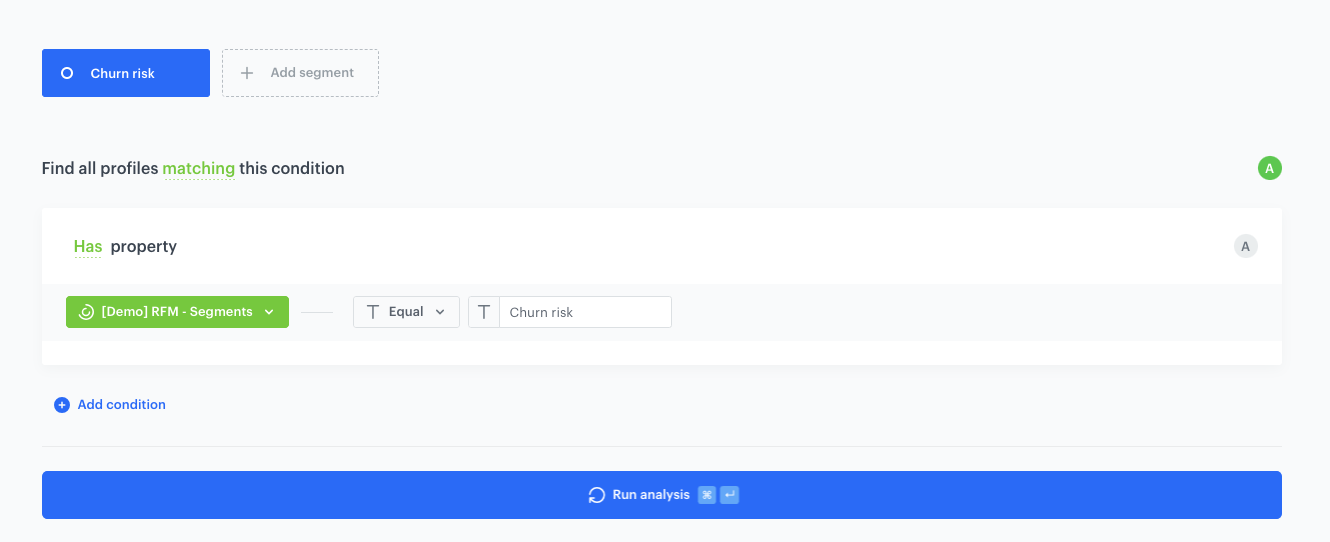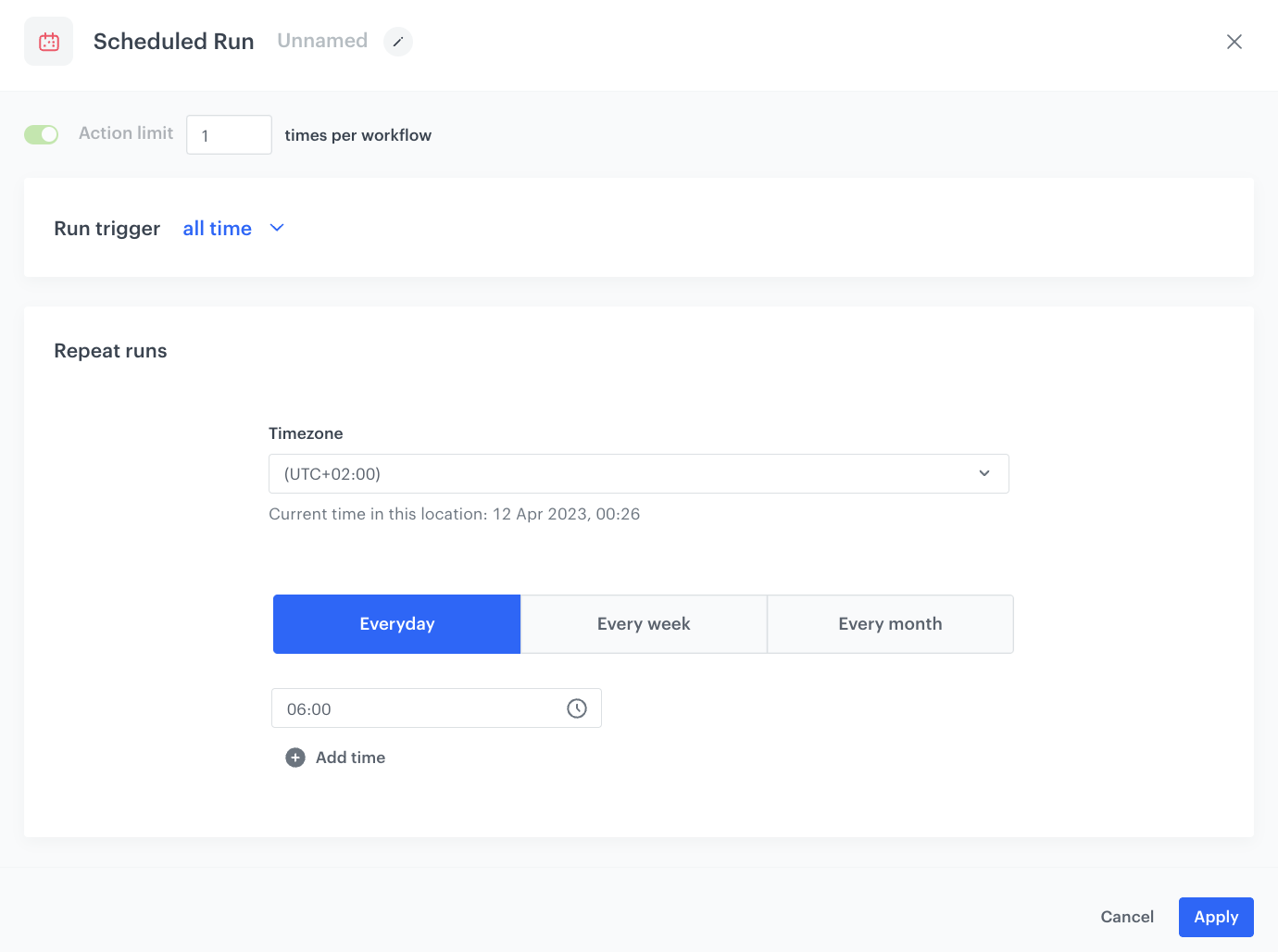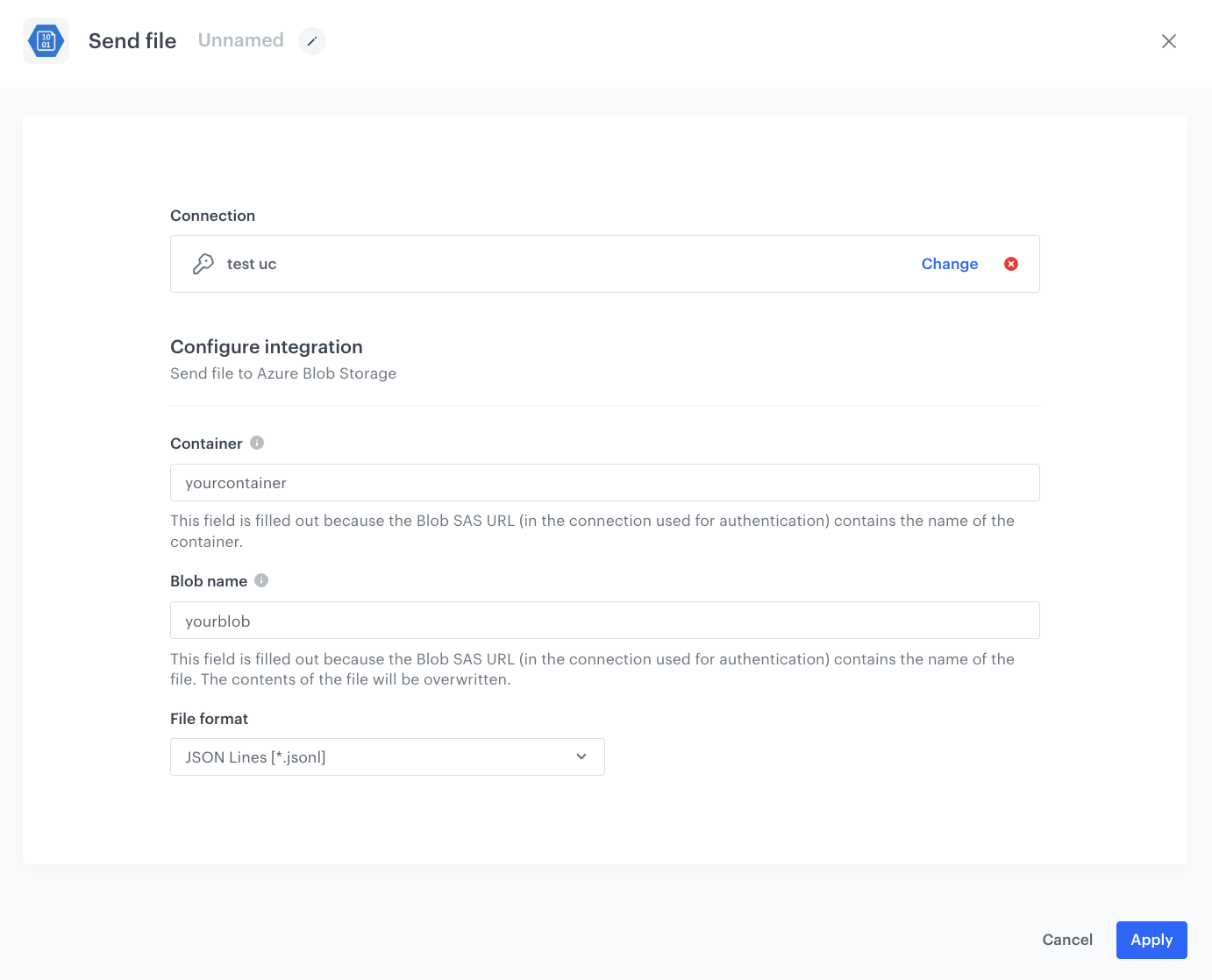Export Customer Segmentation Data to Azure Blob Storage
Synerise allows you to collect data from any touchpoint with a customer. With advanced Synerise Analytics, you can create precise customer segments that you can use not only in Synerise, but also pass them to external tools. Using Synerise’s seamless integration with Azure Blob Storage, you can transfer any data collected in Synerise and use it in other Microsoft tools.
In this use case, we will export a database of customers at risk of churn to Azure Blob Storage. To create a segmentation of customers at risk of churn, we will use the RFM analysis results from this use case. This is just an example. You can export any other data types according to your needs, such as transactions, event data, metrics results, aggregates, expressions, reports, and much more.
Prerequisites
- You must have an account on Azure AD.
- Create an RFM analysis thanks to which you will be able to define the segmentation of customers at risk of churn. You’ll find a detailed process for creating the RFM analysis in this use case.
Process
In this use case, you will go through the following steps:
- Create a segmentation of customers at risk of churn.
- Create a workflow that sends selected customer profiles to Azure Blob Storage.
Create a segmentation of customers at risk of churn
In this part of the process, create a segmentation of customers at risk of churn based on the RFM segmentation you created earlier.
- Go to Analytics > Segmentations V2 > New segmentation.
- Enter the name of the segment.
- Choose Add condition and find the RFM segmentation you created earlier.
- Select the Equal operator and in the right field enter the name of the sub-segment that defines the customers at risk of churn. In this use case, it’s
Churn risk - Save the segment.

Prepare a workflow
As the final part of the process, create a workflow which sends the customers’ data to Azure Blob Storage every day.
- Go to
 Automation > Workflows > New workflow.
Automation > Workflows > New workflow. - Enter the name of the workflow.
Define the launch date
- As the trigger node, add Scheduled Run.
- In the configuration of the node:
- Leave the Run trigger option at default (all time).
- From the Timezone dropdown list, select the time zone consistent with the timezone selected for your workspace.
- Define the frequency of the workflow (for example, every day at 6.00 A.M.).
The workflow will automatically launch at the scheduled time. - Confirm by clicking Apply.

Select customers to export
-
Add a Get Profiles node.
-
In the configuration of the node:
- Select the segmentation you created in the first part of the process.
- In the Attributes section, select the profile attributes which you want to export.
In the example,emailandnewsletter_agreementare selected. - Confirm by clicking Apply.

The configuration of the Get Profiles node
Configure Send file to Azure Blob Storage node
- Click Azure Blob Storage > Send File.
- Click Select connection.
- From the dropdown list, select the connection.
- If no connections are available or you want to create a new one, see Create a connection.
- If you selected an existing connection, proceed with the integration settings.
- In the Container field, enter the name of an existing container in your storage.
If this field is already filled out, it means that the URL used in the connection settings contains the name of the container. - In the Blob name field, enter the name of the blob (file) you want to send to the storage.
If this field is already filled out, it means that the URL used in the connection settings contains the name of the blob. In such case, the contents of the blob will be overwritten. - From the File format dropdown list, select the format in which the file will be sent to the storage.
- Confirm by clicking Apply.

Add the finishing node
-
Add the End node.
-
In the upper right corner, click Save & Run.

The workflow configuration
Check the use case set up on the Synerise Demo workspace
You can check the configuration of each item created in this use case on our Synerise Demo workspace:
If you’re our partner or client, you already have automatic access to the Synerise Demo workspace (1590), where you can explore all the configured elements of this use case and copy them to your workspace.
If you’re not a partner or client yet, we encourage you to fill out the contact form to schedule a meeting with our representatives. They’ll be happy to show you how our demo works and discuss how you can apply this use case in your business.